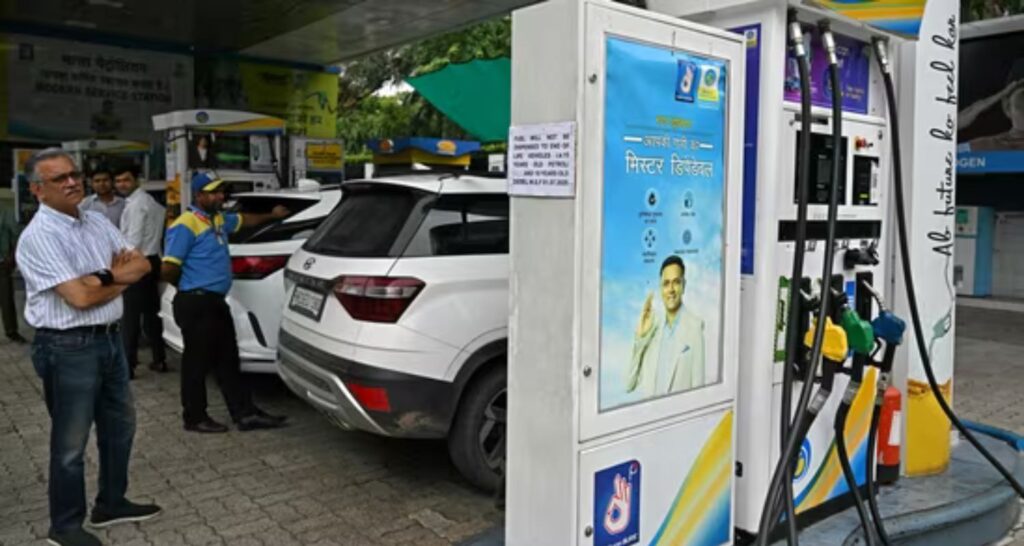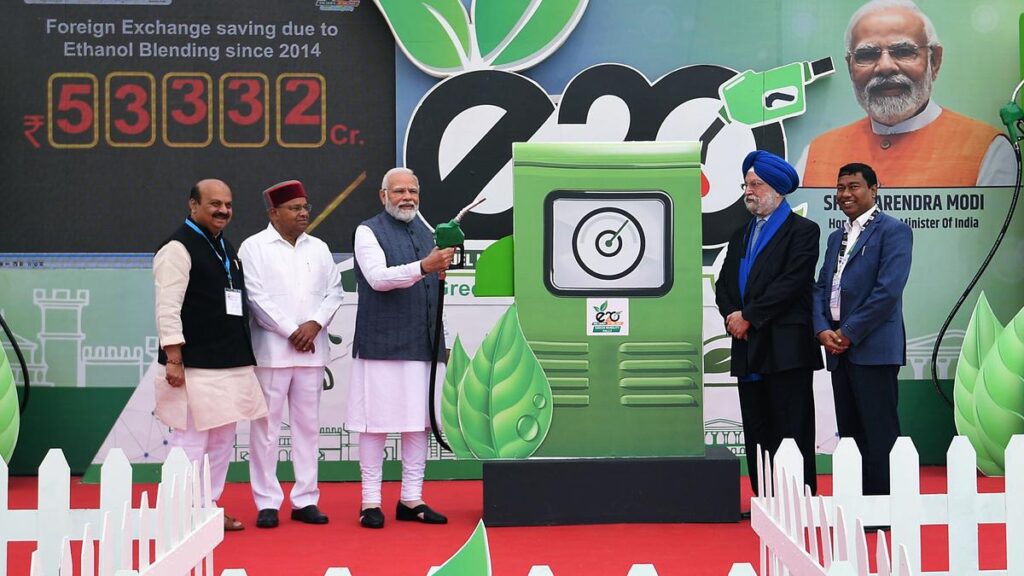Have you noticed your car or bike’s mileage dropping recently? Are you seeing worrying posts on WhatsApp and social media about the new ethanol-blended petrol causing engine trouble? You’re not alone. Across India, vehicle owners are concerned about the shift to E20 fuel and are sharing stories of engine troubles, reduced fuel efficiency maintenance costs, all potentially linked to the increased ethanol content in fuel.
For those unaware, Ethanol blending is part of a government push towards cleaner, more sustainable energy, but many vehicle owners are finding the transition far from smooth. India’s ambitious transition to E20 fuel has achieved a 20% ethanol blending target ahead of the initial 2030 schedule, but it also raises important questions about the balance between environmental benefits and consumer concerns.
While the government’s push for ethanol blending is a major step towards a greener future, it has left many drivers with urgent questions about cost, fuel efficiency, and long-term vehicle health. This is your complete guide to understanding E20 fuel in India, what it means for your vehicle, your wallet, and the environment.
What Exactly is E20 Fuel?
Simply put, E20 fuel is a blend of 20% ethanol and 80% petrol. Ethanol is a biofuel made from renewable sources like sugarcane, broken rice, and even farm waste. This contrasts with traditional petrol, a fossil fuel that contributes significantly to carbon emissions. While E20 is the current focus in India, other blend levels exist, such as E10 (10% ethanol) and E100 (100% ethanol), the latter being used in specialized vehicles not currently available in India.
The primary purpose of ethanol blending is to reduce reliance on crude oil imports and lower CO2 emissions. By incorporating a renewable resource, E20 aims to make a greener alternative for the environment.
India has successfully achieved its 20% blending target ahead of its original 2030 deadline. This initiative has had several positive impacts:
- Foreign Exchange Savings: Since 2014-15, the program has saved over ₹1.4 lakh crore in foreign exchange.
- Environmental Impact: E20 blending has helped reduce CO2 emissions by 700 lakh tonnes.
These figures highlight the potential of ethanol blending to contribute to both economic savings and environmental sustainability.
The Consumer Concern: Is E20 Fuel Hurting Mileage and Wallets?
This is the most pressing issue for daily commuters. Here’s what the data shows.
The Mileage Drop: Yes, a drop in mileage is expected. Ethanol has a lower energy density than petrol. The government itself states that the E20 fuel mileage drop can be:
- 1-2% for vehicles designed for E10 but calibrated for E20.
- 3-6% for other vehicles, including many older models
The Price Puzzle: Even with a mileage drop, shouldn’t the fuel be cheaper? While the base price of ethanol (approx. Rs. 72.75/litre) is lower than petrol, these savings are not fully passed on to the consumer due to taxes like GST, excise duty, and state VAT. This is why you are paying nearly the same price for E20 fuel despite the lower production cost of one of its components. Here’s a detailed cost breakdown of ethanol per liter:
- Base Price: ₹65.35 (weighted average XML ethanol price)
- GST (5%): ₹3.27
- Transportation Costs: ₹2.7-4.13 (depending on distance)
- Total Ethanol Cost: Approximately ₹72.75
The final price of petrol currently ranges from ₹110 to ₹115 per liter, depending on VAT in different states and the excise duty element. The fact that consumers are paying the same price for ethanol-blended petrol as they would for pure petrol, even when crude prices have been trending lower, is a significant point of contention
Is Your Vehicle E20-Ready? The Critical Compatibility Question

A crucial aspect of the E20 transition is vehicle compatibility. The government has stated that cars need to have E20-compatible materials to minimize efficiency losses.
Major automakers have reportedly adopted these upgrades, but the concern remains that not every vehicle on Indian roads is fully compatible.
As of 2025, many vehicles, particularly older models and two-wheelers, were designed for E5 or E10 blends. While automakers have started rolling out compatible vehicles, a significant portion of the existing fleet may not be ready for E20. Using E20 in an incompatible vehicle can lead to serious E20 fuel problems.
- Potential Risks for Older Vehicles (Pre-2021 models):
- Corrosion: Ethanol can be corrosive to certain rubber and plastic parts in the fuel line and engine.
- Engine Performance: You might experience engine knocking, stalling, or reduced power.
- Voided Warranty: Using a fuel type not recommended by the manufacturer can void your vehicle’s warranty.
How to Check if Your Vehicle is E20 Compatible:
- Check the Fuel Lid: Newer vehicles often have an “E20 Compatible” or “Up to 20% Ethanol” sticker inside the fuel filler cap.
- Consult the Owner’s Manual: Your vehicle’s manual is the most reliable source of information on fuel compatibility.
- Contact the Manufacturer: Reach out to your vehicle’s authorised service centre or customer care for confirmation.
Lessons from Around the World: Brazil’s Flex-Fuel Success
Brazil’s Success Story
Brazil offers a compelling case study in ethanol blending. Initiated in the 1970s, Brazil’s national ethanol program, ProAlcool, has transformed the country into one of the world’s largest producers and consumers of sugarcane-derived ethanol. Currently, 84.5% of vehicles in the Brazilian market are flex-fuel vehicles, capable of operating on gasoline and any blend of gasoline and ethanol up to 83%.
Key factors in Brazil’s success include:
- Government mandates requiring gasoline blends with ethanol.
- Subsidies and significant R&D investment.
- The introduction of flex-fuel vehicles in 2003.
Brazil’s experience demonstrates the potential for widespread adoption of ethanol blending with the right policies and technological advancements.
Other International Models
The United States also has a significant ethanol blending program, with 95% of petrol containing a 10% ethanol blend. Other countries have adopted varying approaches to ethanol blending, each with its own set of challenges and successes.
By examining these international models, India can learn valuable lessons and adapt best practices to its own unique context.
The Way Forward: What Vehicle Owners in India Should Do

As India moves towards a potential 30% blend by 2030, being an informed owner is your best defence.
- Confirm Your Vehicle’s Compatibility: This is non-negotiable. If your vehicle is not E20-ready, it is advisable to look for fuel stations that may still offer lower-blend petrol, although this is becoming increasingly rare.
- Stick to Maintenance Schedules: Regular servicing becomes even more crucial. Ensure your fuel filter, fuel pump, and fuel lines are checked during service.
- Monitor Your Mileage: Keep a log of your vehicle’s fuel efficiency. If you notice a drastic drop beyond the expected 3-6%, get your vehicle checked by a trusted mechanic.
The future of ethanol blending in India also depends on several other factors:
- Automaker Initiatives: Continued efforts by automakers to produce E20-compatible vehicles.
- Infrastructure Development: Expanding the infrastructure for producing and distributing ethanol.
- Technology Improvements: Further advancements in ethanol production and engine technology.
Conclusion: Balancing Progress with Practicality
India’s transition to E20 fuel represents a significant step towards environmental sustainability and energy security. While there are valid concerns about mileage, cost, and vehicle compatibility, the potential benefits of reduced emissions and reliance on fossil fuels are undeniable.
For now, the responsibility falls on you, the vehicle owner, to verify compatibility, stay vigilant about your vehicle’s performance, and understand the trade-offs between a greener planet and your running costs.





